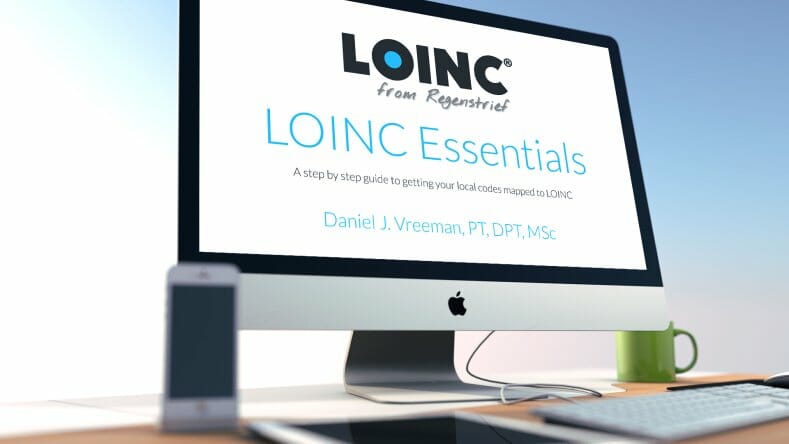LOINC Essentials
A step-by-step guide for getting your local codes mapped to LOINCA step-by-step guide for getting your local codes mapped to LOINC
There are lots of reasons why people want to learn about LOINC. Maybe your organization has decided it will map its local test codes to LOINC for external data exchange. Perhaps you’re an analyst crunching numbers on aggregate data. Or maybe you’re a vendor looking to make your information technology product or mobile health app interoperable with other platforms. LOINC is now ubiquitous in health data systems worldwide, so you’re in good company.
I’ll admit, LOINC can be a little enigmatic at first blush. The term attributes aren’t exactly self-explanatory. Many term names look similar at first. Plus, there are so many of them! Seriously, there are hundreds of glucose terms. Pro Tip: You can ignore most of them! Mapping a large test catalog to LOINC can be a daunting task and it’s hard to know where to begin. You might have downloaded RELMA and thought to yourself “OK, now what?”
Well, that’s why I created this guide.
This guide is unique because it will show you how to hit the ground running.
I’ve used my many years of experience leading the LOINC project and the terminology services of the largest health information exchange in the USA to curate and synthesize these comprehensive resources into the key essentials.
This book cover the basics of LOINC to help you pick out the differences between LOINC terms with subtle but important distinctions. We go step-by-step through the process of getting your local observation codes into the RELMA program and how to use it’s most helpful features. I’ll describe some best practices in LOINC mapping, and how to set yourself up for success in the long run.
My goal is to take you from newbie LOINCer to LOINCer extraordinaire (and even show some expert LOINCers a trick or two).
Learn LOINC Fast
Get the secret weapon that will jumpstart your LOINC mapping and make you a LOINCer extraordinaire in no time
$4.99
See what’s inside
Table of Contents
Chapter 1 – An overview of LOINC
- What LOINC is
- A word on nomenclature
- LOINC in data exchange
- Grown in Indiana, but now serving a growing global community
- Scope of LOINC
- An open development model
Chapter 2 – Get your plan together
- High level approach for mapping your local codes to LOINC codes
Chapter 3 – Human resources and expertise
- Central versus peripheral strategies for mapping
- Mapping project team member roles
- Long term view for maintenance
Chapter 4 – Setup your tools
- Tools you’ll need to get started
- Create your source file(s) for mapping
- Getting your local test catalog loaded into RELMA
- Translating your idiosyncratic abbreviations into words RELMA understands
Chapter 5 – How to locate the right LOINC code
- The LOINC term name is key
- Gross anatomy of a LOINC term name
- The LOINC axes under the microscope
- Types of LOINC Names
- The LOINC Essentials Framework
- Putting the framework to use
- Trust, but verify
- Digging Deeper into the LOINC Property
- Putting our Property prowess to work
- LOINC System and the unfortunate XXX conundrum
- What’s ordered vs. What’s measured
- There might not be an equivalent term in LOINC (yet)
Chapter 6 – Optimizing the mapping process with RELMA
- Optimizing our Working Set
- Setting user preferences
- Setting search limits
- The Mapping screen
- RELMA’s key functions for mapping
- Become a search syntax ninja
- Review additional LOINC term attributes
- Language Translations
Chapter 7 – Mapping local panels to LOINC panels
- LOINC panels
- Defining a panel
- Rules for matching local panels to LOINC panels
Chapter 8 – Sweet. You’re LOINCed. Now what?
- Export your mappings
- Check your work
- Get a validity check on your mappings from Regenstrief
- Let others benefit from your hard work
- Using LOINC names in HL7 messages
- Staying up to date
Chapter 9 – Help LOINC grow
- Requesting new LOINC codes from Regenstrief
- Keep LOINC free!
Next Steps

About the author
Dr. Daniel Vreeman is Director, LOINC and Health Data Standards at the Regenstrief Center for Biomedical Informatics, an Associate Research Professor at the Indiana University School of Medicine, and a Research Scientist at the Regenstrief Institute, Inc. He earned a BA in Biology from Cornell University and a DPT from Duke University. He completed a post-doctoral Medical Informatics Research Fellowship at the Regenstrief Institute while also earning a MS in Clinical Research.
Dr. Vreeman’s primary research focus is on the role of clinical vocabularies and data standards to support electronic health information exchange. Dr. Vreeman has led LOINC development at Regenstrief since 2006, leading more than 23 funded projects, publishing numerous scientific papers, and giving more than 125 invited lectures. He has also provided leadership to the terminology services enabling the Indiana Network for Patient Care, a regional health information exchange in central Indiana. Dr. Vreeman also teaches medical informatics at Indiana University.


